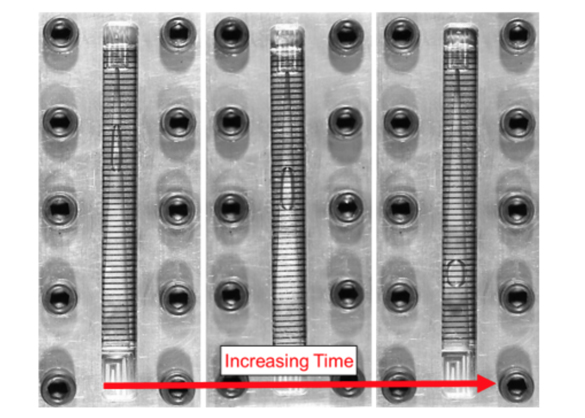Suborbital Testing of Liquid Acquisition Devices for Cryogenic Fluid Management
PI: Kevin Supak, Steve Green (Co-I), Southwest Research Institute - San Antonio
PI: Kevin Supak, Steve Green (Co-I), Southwest Research Institute - San Antonio

- TA02 In-Space Propulsion Technologies
Improvement of cryogenic fluid storage and transfer technology for in-space propulsion systems is required for long-term human explorations beyond low Earth orbit as identified in the NASA Technology Roadmap Technology Area (TA) 02: In-Space Propulsion. Current technology relies on the capillary force within screened channels of a Liquid Acquisition Device (LAD) to deliver vapor-free cryogenic liquid during engine restart and critical transfer processes. However, due to the low temperatures associated with cryogenic fluids, external heating acting on the tank where this fluid is stored will cause vapor bubbles to form within the LAD that are difficult to remove in existing designs. A more efficient design is needed to reliably remove vapor bubbles without costly thrusting maneuvers or active separation systems.
A small modification to a commonly used LAD is proposed: a tapered channel. This design passively removes or 'pumps-out' cryogenic vapor bubbles that are internally generated, substantially improving transfer or delivery of cryogenic fluids. The goal of this flight test is to increase the TRL of this tapered channel LAD design to TRL 5 by characterizing its performance in a relevant environment aboard a suborbital vehicle that can provide multiple minutes of high-quality microgravity.
This experiment will provide novel data that will directly benefit NASA in-space propulsion technology by improving and validating tapered LAD designs as well as strengthening the knowledge of fundamental forces that affect gas/liquid behavior in microgravity.
Technology Details
-
Selection DateREDDI-F1-17B (Apr 2018)
-
Program StatusActive
- 1 sRLV
Development Team
-
PIKevin Supak
-
PI Organization
-
Co-ISteve Green
-
Co-I Organization
-
SponsorNASA

